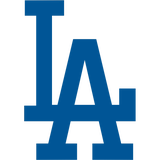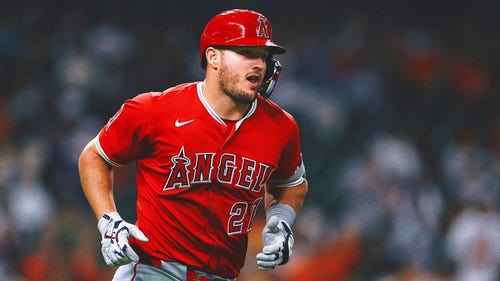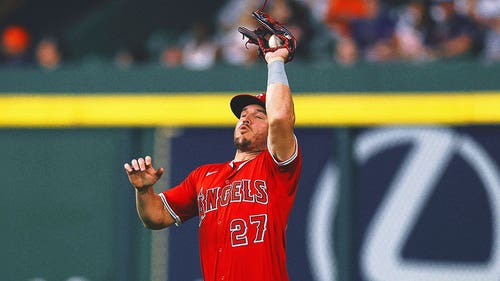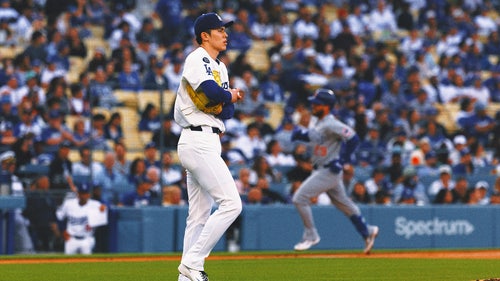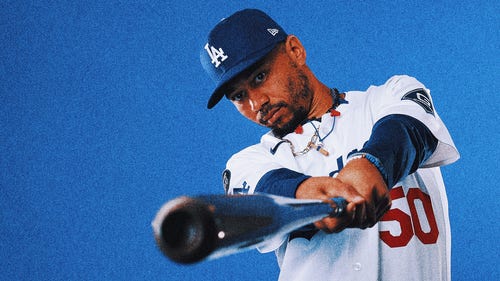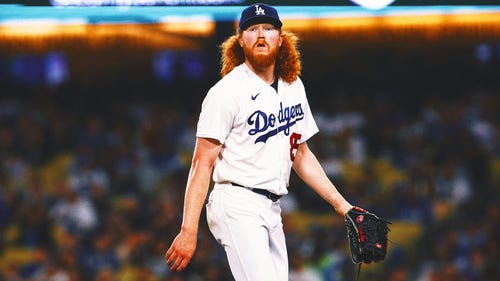
Los Angeles Dodgers Top Ten Prospects For 2017
Mandatory Credit: Steve Mitchell-USA TODAY Sports
The Los Angeles Dodgers had a big run at the National League title in 2016, falling just short to the Chicago Cubs. Will they have more help coming from their farm system?
An Introduction
Our minor league top 10 series is coordinated by Benjamin Chase, one of our contributors at Call To The Pen.
He has poured over thousands of minor league games over the course of the year via milb.tv along with speaking with a number of team and independent scouts. These lists are based out of those conversations.
Each system will have prospects from 10 to 1, and then finish with one newcomer to the system that is worth keeping an eye on that is not in the top 10 at this time.
Conversations are certainly encouraged in the comments section on each system as we go along!
Dodgers System Review
It really is not fair. When an ownership group spends billions of dollars to acquire a team, is willing to spend whatever it takes to get the best major league talent on the field, and backs up those claims by actually spending in that manner, it’s simply not fair when that organization also has a farm system oozing with talent.
Yet, coming into 2016, I had the Dodgers rated as the best farm system in the entire game, led by two of the top 10 prospects in the entire game in Corey Seager and Julio Urias. Urias had an up-and-down debut that finished very well. Seager, well, he just won Rookie of the Year and made a lot of noise for MVP. No big deal!
The thing is, the system was still a top 5 system even without those two last year. That’s how much incredible prospect depth that the Dodgers have built up over the years through excellent scouting and some well-timed international splashes, including their current #1 overall prospect.
That system allowed them to make a move last year to acquire Frankie Montas in a three-team deal that involved the Reds and the White Sox, eventually flipping Montas as part of a trade to acquire Rich Hill and Josh Reddick for their playoff push. Yet, that move really didn’t drastically change their system-wide depth.
The Dodgers are one of the teams who will be in consideration for the very top of the list when I put together organizational rankings after the top 10 lists are done, and Andrew Friedman and his staff have done an exceptional job of keeping the system at a very high level. That level of system depth is why you hear the Dodgers mentioned prominently as a destination for Chris Sale of the White Sox.
Let’s take a look at the top 10!
10. Gavin Lux, SS
Birthdate: 11/23/97 (19 years old)Level(s) Played in 2016: rookieStats in 2016: .296/.375/.399, 2 SB
Lux was the first shortstop selected in the 2016 draft, and with good reason, as he showed in his split time between the Arizona Rookie League and the Pioneer League.
Lux was a guy who had a lot of late helium in the draft process, and many times those guys turn out to be simply hot air and not much substance, but Lux showed his marked improvement this spring to be for real.
He added arm strength and quickness that allows him to project well as a future shortstop. I had two different scouts both tell me about the same play in a Pioneer League game that showed both arm and athleticism that they didn’t think he had in pre-draft process.
Lux offensively has not really translated the additional strength on his frame to the plate. He did collect 13 doubles and 5 triples in his 223 combined at bats this season, but with his smooth left-handed swing and excellent frame, he’d project as a guy that hits a boat load of doubles and puts out 10-15 home runs a year.
Lux’s athleticism on the field is what is most impressive. He is able to move smoothly both on the bases and in the field. He has fringe-plus speed, but he uses his speed exceptionally well, which is why you don’t see a ton of stolen bases, but the 5 triples do exhibit the type of base running he is capable of.
I’d be surprised to see Lux jumped too far next season, even possibly getting a start in the Pioneer League again before perhaps a mid-season move up to low-A, but he’s shown himself to be all that the Dodgers were hoping for with their first selection of this year’s draft.
9. Will Smith, C
Birthdate: 3/28/95 (21 years old)Level(s) Played in 2016: rookie, low A, high-AStats in 2016: .246/.355/.329, 4 HR, 3 SB
While Austin Barnes is more major league ready, it’s hard to argue him over Smith as the catcher in the Dodgers system to be most excited about.
I’ll admit that I wasn’t as high on Smith coming out of Louisville as many were, and as I heard about him going in the first round, I was very surprised as the game tape I’d seen on him showed an excellent defender, sure, but not a whole lot offensively.
Needless to say, I missed this one. Smith did hit a bit of a wall in the Cal League at the end of the summer, but that can as much be attributed to squatting behind the plate every day since February as it can true issues at the plate.
Smith really has an offensive projection that reminds me a lot of Jason Kendall. He has a lot of athleticism that plays well in his speed on the bases and even knows how to drop a bunt and leg it out. He’s got a short, quick stroke that allows him easy contact, and while he doesn’t exhibit big power, he does make consistent solid contact that should lead to some future gap power.
Defensively, Smith’s athleticism is tremendous to watch. He has a plus arm behind the plate, gets down on balls extremely well, and he moves laterally well. He also does very well framing, something I’d heard from folks who saw him working with Louisville’s pitching staff this spring, which included a number of pro prospects.
I don’t know how quickly Smith will move. He could be jumped up to AA in 2017 to challenge him at 22 or give him another shot at the high-A Cal League to get his bat on track. Either way, the defensive skills are premium enough for him to keep advancing through the system at a fast clip.
8. Jordan Sheffield, RHP
Birthdate: 6/1/95 (21 years old)Level(s) Played in 2016: rookie, low AStats in 2016: 12 IP, 3.75 ERA, 1.42 WHIP, 11.76 BB%, 25.49 K%
The older brother of Justus Sheffield, he and his brother may have found themselves in two of the game’s most storied franchises (along with two of the game’s best farm systems currently).
Jordan was a guy who looked to be an early first round selection coming out of high school before Tommy John surgery at the end of his senior season of high school. He also had a similar look this spring before a rough finish to his collegiate season bumped him back to the supplemental first round, where the Dodgers were happy to snap him up.
Sheffield has a definite plus-plus fastball, a true 70 grade pitch that plays up even further due to the movement he gets on it. He works that with a slurvy pitch that breaks more like a slider in the zone, but has some pre-zone loop like a curve, however, it is much more effective than the traditional slurve.
Sheffield has a change that graded anywhere from above-average to plus-plus in talking with scouts, and many feel that, and health, will ultimately determine his future path, whether as a starter or reliever.
Sheffield’s small stature (listed at 6′ and 185, but considered smaller on both accounts) is what has many worried for his future arm health due to the amount of force generated to reach near triple digits with his fastball. However, pitchers like Marcus Stroman have shown that small stature alone does not mean certain arm issues.
Sheffield will likely start at either low- or high-A, but if he can show the starter that he was in early 2016 in college, he’ll leap up the system in a hurry.
Mandatory Credit: Steven Branscombe-USA TODAY Sports
7. Walker Buehler, RHP
Birthdate: 7/28/94 (22 years old)Level(s) Played in 2016: rookie, low AStats in 2016: 5 IP, 0.00 ERA, 0.60 WHIP, 16.67 BB%, 33.33 K%
Buehler was essentially on a redshirt season this year after having Tommy John surgery in August of 2015. He did make it back to the mound for 3 appearances and 5 innings, but not a whole lot can be deciphered from those appearances.
At Vanderbilt, he was the ace of the 2014 College World Series championship team that featured Dansby Swanson and Carson Fullmer, who both went in the top ten selections in 2015. Many thought that the Dodgers got a steal when they were able to coax Buehler into signing a below-slot deal after selecting him 24th overall.
In coming back, many have reported that they are encouraged by the added “fill” that Buehler brought to his body during his TJS rehab, allowing him to look more the part of the dominant ace on the mound, but also with the weight being “good” weight, he has the look of a guy who can hold up for long hauls better than the 6’2, 175-pound guy that was drafted a year ago.
When healthy, Buehler was able to ring back up some solid velocity, but not quite to the 96 MPH that he was touching in college. His breaking pitches both had great action, which was encouraging, but his change left a lot to be desired in deception and control with the pitch.
Buehler will likely start in the low-A Midwest League next year to get his feet under him, but I could see him moving quickly once he builds up a year of innings on the arm again.
6. Yusniel Diaz, OF
Birthdate: 10/7/96 (20 years old)Level(s) Played in 2016: rookie, high AStats in 2016: .267/.326/.415, 9 HR, 7 SB
Considered one of the best young hitters in Cuba when he defected, Diaz signed with the Dodgers for $15.5M after a seven-month layoff after defecting in April of 2015.
Diaz is a guy who may take some development time, but he’s got the skill set that when it clicks, he should jump 2-3 levels rather quickly with his broad skill set.
He has the ability to possibly be an elite leadoff type hitter with his natural skills, though he did show more power in the Cal League. Some I talked with worried that he may have sold out his swing a bit for the power, as he has excellent strike zone judgement, but elongated his swing such that he struck out 71 times over 82 games.
The tools that will carry Diaz are exhibited most easily on the defensive side of things. He has a plus running tool and plus arm along with fringe-plus defense that allows him to excel in center field and easily handle any outfield defensive position.
The work left to do for Diaz will be to translate his quick wrists and excellent contact skills into more of a line drive approach with some loft rather than selling out for the loft and losing the liners that he can easily turn into gap hits. With his speed, those gap hits easily become extra base hits.
Diaz got roughly 2/3 of a season at high-A in 2016, so it wouldn’t surprise to see him at the AA Texas League in 2017 at 21 years old, but it would not surprise me at all if the Dodgers slow Diaz down just a touch to ensure he’s maximizing that contact ability at the plate.
Mandatory Credit: Mark J. Rebilas-USA TODAY Sports
5. Willie Calhoun, 2B
Birthdate: 11/4/94 (22 years old)Level(s) Played in 2016: AAStats in 2016: .254/.318/.469, 27 HR
If it were a matter of going by who I’m cheering for most in a system, Calhoun would be an easy #1 in the Dodgers system without a real close #2.
Calhoun is generously listed at 5’8 (try more 5’5-5’6) and 187 pounds (maybe more like 200+). However, even with that odd frame for a baseball player, he generated some of the most impressive swings from a player in the entire Arizona Fall League.
Calhoun is listed as a second baseman here, but really, that’s just a placeholder. His bat will play wherever he may go, but most likely, he’s not going to play on the dirt. In all seriousness, Calhoun may be the guy who’d benefit most from a designated hitter in the National League as his arm really doesn’t profile well in the outfield either.
At the plate, Calhoun shines. He has extremely quick wrists with the patience to sit back on a pitch in order to demolish it. He also doesn’t miss often when he does take a cut. He only had 65 strikeouts in 503 at bats in AA last season, and 2016 was Calhoun’s first full season as a professional!
His bat will fast track his progress, but I could see Calhoun hitting some bumps along the way when he first hits the majors and works to find a defensive home. He has an impressive work ethic, and he’d likely make himself into an average or even above-average left fielder if given the opportunity to just stay there and hit every day.
Calhoun is likely to be at AAA to open to 2017.
Mandatory Credit: Mark J. Rebilas-USA TODAY Sports
4. Alex Verdugo, OF
Birthdate: 5/15/96 (20 years old)Level(s) Played in 2016: AAStats in 2016: .273/.336/.407, 13 HR, 2 SB
There may not be a guy who I got more divisive comments on than Verdugo in the system. Some people like him as a top 30 overall talent in the game. Others believe that a big season last year has over-inflated his true talent, leading to his flaws being overlooked.
Regardless, even those who questioned placing him as an uber-elite prospects still easily counted Verdugo among the 100 best in the game when pressed. He’s the type that is hard to really find a reason to truly dislike as a player – it’s just where the projection on what he could be comes in.
Verdugo is a guy with a solid eye at the plate. He has a quick bat and very quick wrists with surprisingly good strike zone judgement for a guy who was just 20 all season in AA.
His power, however, is not viewed consistently by those who have seen him. In my viewings, his swing looked tremendous in getting to the ball and fighting off tough pitches, but generating peak power and getting consistent barrel contact was not present, which leads me to wonder if he’ll be more of a Nick Markakis type of hitter rather than a true “bopper” type.
Verdugo does have very solid defensive skills as a premium two-way player that could have gone in the first three rounds in 2013 as a hitter or pitcher before the Dodgers nabbed him in the 2nd round. His arm from the outfield is a true plus arm, if not plus-plus.
Defensively, the biggest concern is Verdugo’s instincts in center. While he’s got the athleticism at this point to cover for a bad jump or bad initial read, he is probably best suited for a corner, especially with his arm. However, then you run into his bat not exactly being a profile corner bat.
Even with the questions about how the bat will profile, this is a 20 year old who just hit for a solid average and struck out only 67 times in 477 at bats in AA. That is an excellent profile, and even if he is a Nick Markakis type going forward, that is an extremely valuable hitter in a lineup.
Mandatory Credit: Jake Roth-USA TODAY Sports
3. Jose De Leon, RHP
Birthdate: 8/7/92 (24 years old)Level(s) Played in 2016: AAA, MLBStats in 2016: 86 1/3 IP, 2.61 ERA, 0.94 WHIP, 5.85 BB%, 32.46 K% (minor league stats only)
I was really struggling initially in my top 3 in this system. While the Dodgers should see as many as 8 players ranked in the top 100, in my view, there is a definite tier of 3 elites at the top – three guys who should all slot in within the top 25-35 prospects in all of baseball.
De Leon may be the biggest draft success story in the last 5 years, coming from a $35K bonus as a 24th round draft choice out of Southern University to the point of making his major league debut last season and being considered among the top 30 prospects in the entire game!
De Leon has a solid three pitch mix with a fastball that sits 92-95 and can run to 97 and runs arm side with late movement. His change mimics that late movement and really has become arguably his best overall pitch, grading out as a certain plus pitch, and even plus-plus in the eyes of some scouts.
De Leon also mixes in a slider, which really isn’t a big time strikeout pitch, but he does get a seeming double break on the pitch where he gets late depth after the initial movement of the pitch that helps him to miss barrels and induce weak contact.
De Leon had some shoulder inflammation that delayed the start of his season in 2016, and he was a player who had rough conditioning when he came into pro ball, so he has some caution flags to note, but his conditioning is excellent now, and as long as his health remains steady, he should be a guy who ends up in the Dodger rotation to open 2017.
Mandatory Credit: Mark J. Rebilas-USA TODAY Sports
2. Cody Bellinger, 1B/OF
Birthdate: 7/13/95 (21 years old)Level(s) Played in 2016: AA, AAAStats in 2016: .271/.365/.507, 26 HR, 8 SB
With major league bloodlines (father Clay Bellinger played on two Yankee World Series champions and on an Olympic team), Cody had a leg up on the typical 4th round selection, but no one could have projected the leap forward he would take in 2015.
After hitting just four home runs in his first two professional seasons, Bellinger exploded for 30 home runs. He sacrificed some of the tremendous line drive swing that he had previous in order to get more loft into his swing.
More from Call to the Pen
Showing that 2015 was no Cal League-induced season, Bellinger repeated his big power in AA this season, knocking out 23 home runs, along with 3 more as part of Oklahoma City’s final playoff push in a late season call up to AAA. However, the bat that looked like a .300 stroke for his first two seasons hit .263 in AA before a big 3 game AAA sample bumped him up over .270 on the season.
Bellinger again showed very well in the fall league, and he’s got a lot of momentum as a top 25 overall prospect, likely making #1 on many Dodger lists this offseason. I have some concerns with Bellinger, but that’s like saying I have concerns that my bank account is too large.
Bellinger is a solid athlete that could make the move to a corner outfield and be average to above-average there. At first base, he is an exceptional defender, with very good feel for the position and presenting an excellent target for his fielders at 6’4 and 215ish pounds.
Where my concerns with Bellinger lie are purely in his altered swing. He can get off path with that swing, and while he’s not exhibited much swing and miss to his absolute credit, he has shown issues with consistent contact and consistent swing path. Major league pitchers will be able to find ways to lead him into those bad swing paths more frequently with good video study, which does worry me that selling out for power as he’s done may end up hurting him in his initial adjustment to the big leagues.
I’d imagine Bellinger plays this season at AAA, and he’ll likely see his MLB debut as a September call up.
1. Yadier Alvarez, RHP
Birthdate: 3/7/96 (20 years old)Level(s) Played in 2016: rookie, low AStats in 2016: 59 1/3 IP, 2.12 ERA, 1.03 WHIP, 8.75 BB%, 33.75 K%
When the Dodgers went all-in on the international market in 2015, Alvarez was easily the jewel of their class. He then came out and simply showed that he may have even been under-paid at $16M bonus coming from Cuba.
Alvarez has a fastball that easily sits in the mid-90s without any worry in his delivery of added effort to generate that velocity. He has topped 100 MPH a few different times this season, and honestly, he still has room to fill out!
He pairs that heat with a slider that really works in two ways in the starts I saw of him in Midland. He seemed to get a hard, sharp break on the slider at times and at others, he’d go with more of a sweeping, wipeout variety slider. Both registered in the low- to mid-80s, which made it even harder on hitters to know which they were about to face.
His change was also more impressive than I’d been led to believe, easily grading as plus, and fringe plus-plus, likely sitting at a 60-65 on the 20 to 80 scouting scale, primarily due to inconsistency with the movement on the pitch. His arm speed deception, however, was consistent and made the pitch work for weak contact even when he didn’t get great movement on it.
Alvarez really has not taxed his arm much at all, so the Dodgers will be easing him in, and one of the biggest things to leap out when watching him is just how well he controls the zone at this point after having nearly two seasons off of throwing competitive pitches. While some down-graded Alvarez coming into the season due to his control, he showed premier control in his time at low–A, walking 11 total in 9 starts.
Alvarez will likely take a crack at the Cal League this year, so be wary of judging his performance too much by his numbers there, but if he can succeed there, he could move quickly toward the majors as one of the most exciting arms the Dodgers have ever seen, and that’s saying a lot in this system.
Newcomer To Keep An Eye On: D.J. Peters, OF
Birthdate: 12/12/95 (20 years old)Level(s) Played in 2016: rookieStats in 2016: .351/.437/.615, 13 HR, 5 SB
Peters is one of the rare players who was drafted 3 times in his lifetime, and if he’d have chosen to fulfill his Cal State-Fullerton commitment, it’d easily have been 4.
Peters is a very solid athlete that impresses the second you see him due to his 6’6, 225-pound frame that is quite cut, making you think more of an NFL safety than a major league outfielder.
los angeles dodgers
Call to the Pen 1 dFormer L.A. Dodger Alex Guerrero Signs Deal to Play in Japan
More headlines around FanSided:
1 d - Dodgers Wait For Collective Bargaining Agreement2d - On the Dodgers, Debt and Roster Decisions2d - The Dodgers May Face a Tough 2017 Season3d - Dodgers Adrian Gonzalez: Are His Contributions Changing His Value?3d - LA Dodgers: MLB Says It's Time for You to Pay the PiperMore News at Dodgers Way
While he may not have elite speed, he gets up to solid pace after a few steps, and that allows him to play up very well anywhere in the outfield. His plus arm likely profiles best in right field, however.
What caught my eye most in Peters was not the hulking size, the beautiful right handed power swing, or even the big time arm. It was the ability as a bigger guy to simply be patient for his pitch. Peters walked 35 times in 262 at bats, and he did strike out 66 times, but often, he let the count get deep watching pitches go by, waiting for the one he could handle best.
He’ll need to expand the pitches he can work with to avoid such a strikeout rate going forward, but that level of plus-plus raw power, solid contact ability, and pitch recognition is something to keep an eye on as he moves up their system for sure.
Agree? Disagree? Someone you have a question about from the system? Leave a comment down below!
This article originally appeared on
